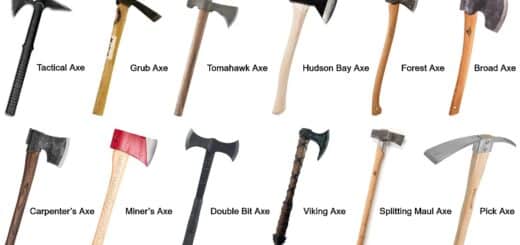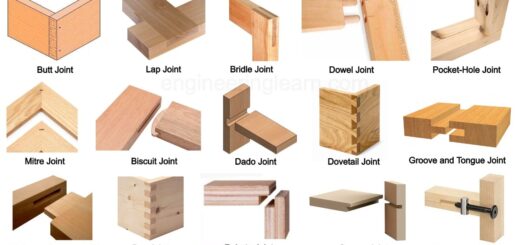Wood Router: Types of Wood Routers and Their Uses [Complete Guide]
![Wood Router: Types of Wood Routers and Their Uses [Complete Guide]](https://engineeringlearn.com/wp-content/uploads/2023/03/Wood-Router-1024x539.jpg)
Wood Router Introduction:
Wood Router: Types of Wood Routers and Their Uses [Complete Guide]: – A router is a capable instrument that woodworkers use for a variety of tasks, including forming joints, intricate designs, grooves, shaping wood edges, and interior cuts into fairly hard wood or polymers. This is a piece of equipment that every carpenter’s toolbox should contain, whether they are novices or seasoned woodworkers. Your favorite furniture can be adorned with an astounding variety of shapes, patterns, and indentations using a wood router.
Notwithstanding, prior to making this fundamental buy, you really want to investigate generally on sorts of switches, highlights, how they work, the different brands, and so forth. Get your work done alright to guarantee that you go with an educated choice and try not to make unreasonable buys. In this aide, we will frame the various classifications of wood switches and their elements. We’ve likewise remembered a point by point guide for picking the best wood switch for your particular requirements.
Types of Wood Routers
Routers can be divided into a number of different types based on their unique features, designs, and functionalities. The fixed-based style router and the plunge router are the two fundamental types of wood routers. Heavy-duty, medium-duty, and light-duty routers are among the alternatives. The CNC (Computer Numerical Controlled) router is another type of specialised wood router. Each of the aforementioned wood router kinds has advantages and limitations, and each ensures perfection in a certain application. In order to help you choose the finest router for your needs, let’s examine each category and find out what makes it different from the other routers.
1. A Fixed-Base Router
Fixed-base switches highlight a fundamental plan that has the body and base set together, making it ideal for fledgling craftsmen. While working with a fixed-base switch, begin by setting the specific cut profundity prior to initiating work. The profundity ought to stay predictable all through the meeting. The wood to be cut is commonly clipped immovably on a worktop to diminish development. Thusly, you can’t work upward beyond materials from the top; you can begin from the edges. Albeit the switch accompanies a fixed base, it’s as yet customizable. Loosening up the neckline and tuning the control buttons can change the profundity of the piece.
Pros of Fixed-Base Router
- Your hands can be near to the base and the workpiece because the handles are often placed farther down the router’s body.
Cons of Fixed-Base Router
- Doesn’t permit the switch’s piece to cut beyond the materials – the plans made over the surface generally start from the edge.
- Not viable with most dances and layouts
2. A Plunge Router
The spring-loaded bases of plunge routers allow them to be ideal power instruments for cutting vertically. They have a unique design that enables the lowering of the rotating router bit into the material. By relaxing the lock mechanism and moving the base in the desired direction, you can alter the plunge router’s depth even while it is in use. When using a plunge-base router, the bit is placed precisely above the base on the workpiece. The ability to cut the workpiece at any location when necessary is a plunge router’s principal benefit. When compared to fixed-base routers, this device is more expensive due to its adaptability.
Pros of Plunge Router
- Makes many plans proper for various dances and layouts.
- At the point when the switch is brought down to a specific profundity and fixed set up, it works like a fixed-base switch by guaranteeing consistency.
Cons of Plunge Router
- Possibly a little more expensive than fixed routers
Combo Router Kits
Thinking about what to purchase between the fixed-base and the dive switch and mightn’t? Most brands are presently offering combo units that involve one engine and two bases – the fixed and plunge base. The combo switch units are uncommonly intended to substitute effectively, yet you’ll need to dig further into your pocket to claim one. While clients will not need to buy two switches, changing bases can slow the work process.
Heavy-Duty, Medium-Duty, & Light-Duty Routers
Duty, when referring to a router, refers to the router’s size and power, which affects how well it performs specific tasks.
A) Heavy-Duty Routers
Substantial switches are the most regularly utilized hand switches. It includes a major collet that can hold set up switch pieces of over 1½ inches.
B) Medium-Duty Routers
Medium-Duty Routers are appropriate for light applications because of their modest weight and compact size. Additionally, ordinary applications can be used comfortably with medium-duty routers.
C) Light-Duty Routers
Light obligation switches are alluded to as semi-capable devices, ideal for capable craftsmen. They are little and lightweight and just utilize little measured bits because of their little collets.
Wood Router Buying Tips
A) Horsepower
It’s one of the key factors to consider while choosing a switch. Make sure your switch has an engine speed of at least 2 HP so it can force larger cutters through the stock.
B) Electronic Motor Feedback
The switch can work at a consistent speed thanks to this crucial element, which holds it back from dialing back or becoming stuck when the heap limit rises.
Wood Router Safety Points
Wood switches are extremely powerful devices that can cause grave risk on the off chance that not dealt with as expected. The following are a couple of tips on the most proficient method to utilize and really focus on your switch:
- Begin by perusing the maker’s manual before you start working with it. Switch clients are encouraged to continuously begin with this step, in any event, for the experts. No one can really tell what might have changed.
- Continuously switch your switch off when not being used.
- Take the battery out or turn off it while changing the pieces.
- Normalize using both hands to grasp your router. Larger machines operate at tremendous speeds and generate a lot of power; if they were to escape your control, the results may be terrible.
- When working with routers, put on the proper clothing and safety equipment. When cutting wood, goggles will shield your eyes from dust and other particles. Wearing a mask when working with some materials will prevent you from breathing in dangerous compounds.
- Remember to get accessories that are compatible with your desired router as you get ready to weigh your selections. While certain sophisticated attachments are model- or brand-specific, there are some universal accessories available from many manufacturers. Make sure the router you choose is appropriate for the task at hand.
- A little wood switch is ideal for those searching for detail in their work. Regardless, a huge and flexible machine is generally suitable for clients with volumes of work. Never hold back on the nature of the item. In any case, an item’s cost doesn’t necessarily liken to quality. Thus, don’t tragically conclude the nature of a switch utilizing cost from the get go. You don’t need a switch that will get harmed following half a month.
Image Source: – vecteezy, obsessedwoodworking













